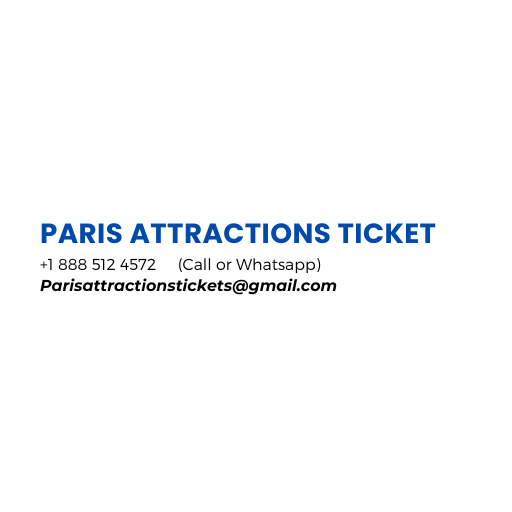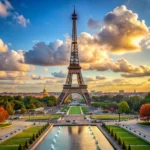When you find yourself in the heart of Paris, the allure of nearby destinations can be too tempting to resist. One of the best day trips that combines rich history, stunning architecture, and tantalizing flavors is a journey to Reims, the capital of the Champagne region. Embark on a day filled with champagne tasting and explore the picturesque landscapes that make this trip unforgettable.
Why Reims?
Reims, just a short train ride from Paris, is an essential part of any trip to the Champagne region. Known as the “City of Coronations,” Reims has played a significant role in French history, hosting the coronation of many French kings. Its captivating Gothic cathedral, Cathédrale Notre-Dame de Reims, is a UNESCO World Heritage site that warrants a visit. You’ll be awestruck by its stunning stained-glass windows and intricate sculptures.
Getting to Reims
The journey from Paris to Reims is straightforward and enjoyable. You can catch a train from Paris’ Gare de l’Est, which takes around 45 minutes to 1 hour. Make sure to check the SNCF website for timetable details and tickets. Once you arrive, the charm of Reims will start to unfold before you.
Explore the City
After arriving, take a leisurely stroll through the charming streets of Reims. Here are a few highlights you shouldn’t miss:
- Cathédrale Notre-Dame de Reims: This breathtaking cathedral is a must-see. Its majestic façade and detailed interiors hold centuries of history.
- Porte de Mars: A Roman triumphal arch dating back to the 3rd century, it gives a glimpse into Reims’ ancient past.
- Palais du Tau: Once the residence of archbishops and now a museum, this site provides insight into the coronations that took place here.
The Champagne Experience
Once you’ve explored the city, it’s time for the star of the day: champagne tasting! Reims is home to some of the most prestigious champagne houses. Here’s how to make the most of your tasting experience:
- Choose Your Houses: Some famous houses like Veuve Clicquot, Taittinger, and Pommery offer tours and tastings. Make reservations in advance to avoid disappointment.
- Tour and Taste: During your tour, you’ll learn about the champagne-making process, from grape to glass. Each house offers tasting sessions where you can sample exquisite champagnes paired with local cheeses and chocolates.
- Choose a Guided Tour: If you prefer a worry-free experience, consider booking a guided day trip from Paris. Many tours include transport, a knowledgeable guide, and several tastings.
Food Pairing with Champagne
While champagne is delightful on its own, pairing it with food enhances the experience. In Reims, indulge in local specialties:
- Ramen de la Champagne: A local specialty, enjoy tasting it with your bubbly.
- Cheese: Local cheeses such as Chaource or Brie pair beautifully with champagne.
- Macarons: These delicate treats are a sweet accompaniment to dry champagnes.
A Scenic Return
After a day filled with everything bubbly, take a moment to absorb the scenic beauty of the Champagne vineyards as you head back to Reims train station. These rolling hills, dotted with vineyards, provide an idyllic backdrop to your journey home. You’ll find it hard not to admire the peaceful landscapes and the charm of the Champagne region as you travel back to Paris.
In just one day, you can immerse yourself in history, indulge in exquisite champagnes, and enjoy fine French cuisine. A day trip from Paris to Reims is a perfect escape that will leave you with unforgettable memories and a taste for more adventures. Whether it’s your first visit or a recurring journey, Reims and its sparkling delights promise a day of joy and discovery.
The Rich History of Champagne Production in Reims
Reims: The Sacred Birthplace of Champagne
From Roman Vines to Royal Bubbles
Beneath Reims’ cobblestone streets lies a 2,000-year-old story of winemaking alchemy. The Romans first recognized the region’s magic—how the region’s chalky soil (belemnite fossil deposits from 70 million years ago) gives Champagne its signature minerality. By the 9th century, still wines from these slopes graced coronation banquets at Reims Cathedral, where 33 French kings were crowned. But the true revolution came in 1697 when Dom Pérignon perfected the méthode champenoise in Hautvillers’ dim cellars, using English glass bottles strong enough to contain the pressure of secondary fermentation.
The Golden Age of Grandes Maisons
Stroll down Rue de Champagne past the iron-gated estates where Champagne’s legendary houses took shape:
- Veuve Clicquot (1772): Where Madame Clicquot invented riddling racks to clarify Champagne
- Taittinger: Cellars in 4th-century Gallo-Roman chalk quarries
- Pommery: 18km of tunnels adorned with Art Nouveau carvings
Each house developed distinct styles—Bollinger’s oak-aged prestige cuvées versus Krug’s multi-vintage complexity—creating a sparkling lexicon now protected by the 1927 AOC laws that define everything from vine spacing to pressing techniques.
The Cathedral of Bubbles
Reims’ UNESCO-listed crayères (chalk cellars) maintain perfect 11°C/90% humidity year-round. At Ruinart, the oldest house (1729), descend 38 steps into a 2nd-century quarry where 2.5 million bottles slumber. Special experiences include:
- Sabering vintage bottles at Piper-Heidsieck
- Blending your own cuvée at Mumm
- Moonlit cellar concerts at Champagne Charles de Cazanove
Beyond the Flute
The Route Touristique du Champagne winds through 300+ grower-producers like:
- Champagne Vilmart (Rilly-la-Montagne): Biodynamic plots worked by horse
- Champagne Tarlant (Œuilly): Zero-dosage styles from 100-year-old vines
- Champagne Jacques Selosse: Cult-status wines aged under cork
Living Heritage
Time your visit for:
- June’s Fêtes Johanniques (medieval festival with Champagne-fueled banquets)
- Harvest season (September) when pickers sing folk songs in the vineyards
- December’s Habits de Lumière when houses illuminate their façades
The First Sip
At a tasting in Reims’ Art Deco Café du Palais, you’ll understand why Winston Churchill declared “In victory, Champagne! In defeat, need it more.” Each bubble carries the weight of history—from Benedictine monks to Belle Époque magnates—in a single, glorious eruption of flavor. This isn’t just wine; it’s liquid archaeology from France’s most sacred soil.
Pro Tip
Book the Tramway du Champagne—a vintage trolley that shuttles between Reims’ grandest houses, complete with onboard tastings of rare late-disgorged vintages.
- Historical Importance: The evolution of winemaking techniques from the Roman era to present-day practices.
- Pioneering Figures: The contributions of figures like Dom Pérignon to modern Champagne production.
- Architectural Heritage: Landmarks that reflect the culture and history of Champagne in Reims.
- AOC Regulation: Ensuring quality control in the production of Champagne.
- Cultural Significance: Champagne as a symbol of celebration and pride for the locals.
As you consider exploring Reims, remember that drinking Champagne here is more than just about indulging in a fine beverage; it’s a journey through history. Those bubbles in your glass tell a story—a story rich with passion, craftsmanship, and the legacy of generations. So, the next time you raise a flute of Champagne, think of Reims, where tradition and excellence come together in every delightful sip.
Must-Visit Champagne Houses for Tasting Experiences
When planning your trip to France, indulging in the exquisite world of Champagne is a must for any wine enthusiast. Nestled just east of Paris, the Champagne region offers a delightful blend of culture, history, and, of course, bubbly perfection. Here are some must-visit Champagne houses that promise memorable tasting experiences.
Moët & Chandon
If you want to taste the iconic Champagne renowned around the globe, Moët & Chandon is at the top of your list. Founded in 1743, this house is one of the oldest and largest producers of Champagne. Their cellars, spanning over 28 kilometers, are a marvel in themselves. Guests can enjoy guided tours that delve into the meticulous production process, followed by curated tastings showcasing their classic Moët Impérial and the prestigious Dom Pérignon.
Veuve Clicquot
A visit to Veuve Clicquot is not just a tasting; it’s an experience steeped in history. Established in 1772, this Champagne house is known for its bold flavors and rich heritage. The estate offers various tasting packages, including tours of its chalk cellars, which were designated a UNESCO World Heritage site. Don’t miss their famous Yellow Label Brut, paired with local cheeses for a perfectly delightful experience.
Taittinger
Taittinger is famed for its elegant and creamy champagnes, with a significant focus on Chardonnay grapes. Touring this beautiful estate allows you to stroll among the ancient chalk caves that date back to Roman times. Interact with knowledgeable guides who will introduce you to their exquisite non-vintage cuvée as well as their refined prestige cuvée, Comtes de Champagne. The dramatic ambiance of the cellars adds to the allure of this tasting experience.
Piper-Heidsieck
An exemplary choice for art and Champagne lovers alike, Piper-Heidsieck is known for its unique partnership with artists throughout history, including the likes of Pablo Picasso and Jean-Paul Gaultier. The estate’s engaging tours highlight the brand’s artistic collaborations and provide insights into the crafting of their notable champagnes. Be sure to taste their signature cuvée, which combines flavors of apples and brioche, making it an unforgettable sip.
Bollinger
Bollinger stands out with its robust and full-bodied Champagne, predominantly using Pinot Noir grapes. This prestigious house, founded in 1829, is located in the charming village of Ay. During visits, guests learn about the traditional methods of production still employed today. The experience typically includes tastings of their Special Cuvée and an opportunity to sample vintage options. The consistent quality of Bollinger makes it a favorite among connoisseurs.
Laurent-Perrier
Known for its delicate and refined style, Laurent-Perrier is celebrated for its commitment to producing terroir-driven wines. The estate’s tours lead you through lush vineyards and ancient cellars, culminating in a tasting of their signature Laurent-Perrier Brut and unique Cuvée Rosé, which stands out for its distinct berry notes. This house offers a perfect balance of heritage and innovation, making it a must-visit on your Champagne journey.
Ruinart
As the first established Champagne house, dating back to 1729, Ruinart is known for its luxurious and smooth wines. The tasting experience here focuses heavily on the Chardonnay grape, often likened to a silk ribbon due to its smoothness. Guests can explore underground chalk cellars and enjoy tastings that showcase the essence of the Champagne region. Don’t miss their esteemed Ruinart Blanc de Blancs, perfect for a sunlit afternoon.
In
While visiting these remarkable Champagne houses, indulge your senses and immerse yourself in the rich history that defines this intriguing region. Each house offers a unique experience and encourages you to appreciate the differences between their styles and flavors. Crafting memorable moments, delightful sips, and unforgettable memories await as you discover the bubbles of Champagne.
Scenic Routes: How to Get from Paris to Reims
Traveling from Paris to Reims is an experience that goes beyond just a simple journey; it is a chance to take in picturesque landscapes and immerse yourself in charming French villages along the way. The direct route is convenient, but opting for scenic routes will allow you to explore the beauty and culture of the Champagne region more fully. Here are several ways you can make your travel memorable.
Driving from Paris to Reims
If you prefer the flexibility of driving, you can take the A4 motorway. The road is straightforward and will have you in Reims in about 1.5 to 2 hours, depending on traffic. However, if you wish to soak in stunning scenery and quaint towns, consider these alternate routes:
- A34 Route: This route takes you through the charming villages of Dormans and Épernay, known for its champagne houses. The rolling vineyards and serene countryside are sights to behold.
- Scenic Champagne Route: This path meanders through the heart of Champagne, dotted with vineyards, historic sites, and picturesque small towns. Be sure to stop at Montagne de Reims Natural Regional Park to enjoy its beautiful views.
Taking the Train to Reims
Another popular option is traveling by train from Paris to Reims. The journey typically takes around 45 minutes, making it a quick and comfortable choice. You can board a high-speed TGV train from Gare de l’Est station. The train travels through beautiful countryside, offering glimpses of lush vineyards and charming towns. The direct route is efficient and allows you to sit back and relax.
Exploring the Champagne Region
As you make your way to Reims, don’t forget to explore the numerous attractions that line the way. Here are some must-see stops to consider:
- Épernay: Known as the heart of the Champagne region, Épernay hosts several prestigious champagne houses, including Moët & Chandon. Here, you can take tours and tastings that will give you a deeper appreciation of this sparkling wine.
- Dormans: This small town offers a peaceful atmosphere. The Church of Saint-Étienne, with its impressive stained glass, is a cultural gem worth visiting.
- Verzy: Known for its unique beech trees, the ‘Faux de Verzy’ forest is an enchanting site of natural wonder. You can take a walk here to connect with nature and marvel at the unique landscape.
Best Times to Travel
While the region is beautiful year-round, the best times to visit are spring and early autumn. During these seasons, you’ll enjoy mild weather and the charm of blooming vineyards or vibrant autumn foliage. If you’re planning a trip during the harvest season in late September through October, you can participate in local festivities celebrating the grape harvest.
What to Pack
Before setting off on your adventure, make sure you pack appropriately for the day. Here are some essentials:
- Comfortable shoes: You’ll likely be walking quite a bit, especially if you plan to visit several vineyards.
- Water bottle: Stay hydrated as you explore the countryside.
- Camera: The scenic views are Instagram-worthy, so capturing moments along the way is a must.
Wrap Up Your Adventure
After immersing yourself in the delightful sights and flavors of the Champagne region, you’ll arrive in Reims, ready to explore its magnificent cathedral and rich history. Whether you drive or take the train, the journey from Paris to Reims can be as enriching as the destination itself. Embrace the scenic routes, make pit stops at charming towns, and enjoy the beauty of France’s countryside.
Your day trip from Paris to Reims promises adventure, delicious champagne tasting, and unforgettable memories—all waiting for you just a short distance away from the vibrancy of the capital.
Pairing Champagne with Local Cuisine: A Culinary Guide
Champagne is not just a drink; it’s an experience that pairs beautifully with a variety of local cuisines. Known for its luxurious appeal and celebratory nature, Champagne originates from the region of the same name in France. Its effervescence, acidity, and complexity make it a versatile partner for many dishes. Understanding how to pair Champagne with food can elevate your culinary experience, whether you are hosting a special dinner or enjoying a casual meal at home.
When pairing Champagne with food, it’s essential to consider the different styles of Champagne. From the fresh and fruity notes found in Brut Nature to the richer, full-bodied character of Vintage Champagne, each type has unique qualities that complement various flavors. Here’s how to explore some perfect pairings:
Sparkling Appetizers
Start your meal with light, sparkling appetizers. Champagne pairs exceptionally well with:
- Oysters: The briny, fresh taste of oysters is enhanced by the crispness of Champagne, creating a refreshing contrast.
- Canapés: Light canapés topped with cream cheese or smoked salmon offer a delightful flavor pairing with the bubbles.
- Cheeses: Soft cheeses like brie or goat cheese and Champagne is a marriage of creaminess and vivacity.
Salads and Light Main Dishes
For salads and lighter main courses, opt for a non-vintage Champagne. The clean and fruity notes make it a perfect match for:
- Green Salads: Fresh greens paired with vinaigrette provide a zesty balance.
- Grilled Fish: Simple fish dishes like grilled sea bass or trout enjoy the brightness of Sparkling Wine, enhancing the meal’s delicate flavors.
- Pasta Primavera: The crispness cuts through the richness, balancing out the veggies and light sauces.
Rich Dishes
When serving richer dishes, a vintage Champagne can stand up to hearty flavors. Consider these pairings:
- Roasted Chicken: A classic dish, roasted chicken brings out the complexity of flavors in an aged bottle of Champagne.
- Duck Breast: The gamey richness of duck is beautifully complemented by a rich, full-bodied Champagne.
- Pork Loin: The sweetness of the meat and any accompanying sauce is balanced by the Champagne’s acidity.
Desserts and Sweet Treats
Don’t forget about dessert! Sweet dishes often pair wonderfully with sweeter styles of Champagne, such as Demi-Sec or Doux. Consider the following:
- Fruit Tart: The natural sweetness of fruits is beautifully balanced with light sweetness from the Champagne.
- Chocolate Mousse: Dark chocolate’s richness is offset by Champagne’s effervescence, enhancing the indulgent experience.
- Macarons: These delicate bites pair well with various Champagne styles, enhancing their nuanced flavors.
Regional Pairings
Exploring regional dishes can heighten the fun of pairing Champagne. Here are some local cuisines that highlight the drink’s versatility:
- French Cuisine: Dishes like coq au vin or ratatouille work beautifully with Champagne’s acidity.
- Italian Dishes: Risottos and creamy pastas balance well with sparkling wines, enhancing the meal experience.
- Asian Cuisine: Think sushi or spicy Thai dishes; the bubbles cleanse the palate, enhancing flavors.
Remember, the key to a successful pairing is balance. Look for dishes that complement the wine’s acidity and richness, and don’t be afraid to experiment! Pairing Champagne with local cuisine can lead to wonderful discoveries and unforgettable meals. Each sip may open a new door to flavors you’ve never thought to combine. Keep exploring, have fun, and enjoy the delightful experience that is Champagne dining.
Conclusion
A day trip from Paris to Reims offers an enriching blend of culture, history, and delightful experiences. As you explore this charming city, you’ll uncover the rich history of Champagne production, which plays a significant role in both regional culture and global traditions. Delving into the elegant Champagne houses, each with its unique story and distinct flavors, allows you to appreciate the artistry behind this iconic beverage.


